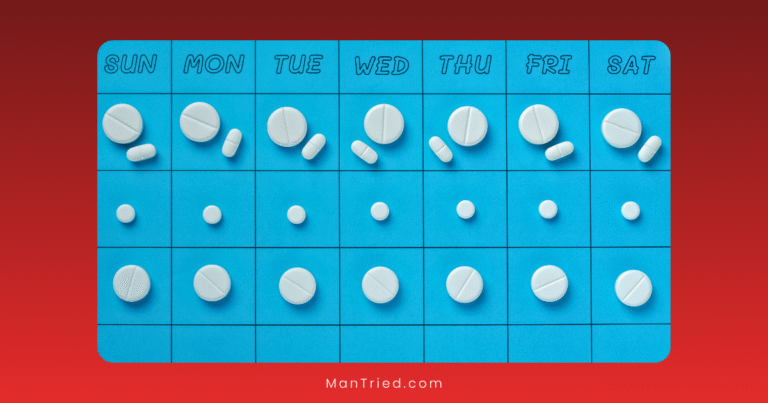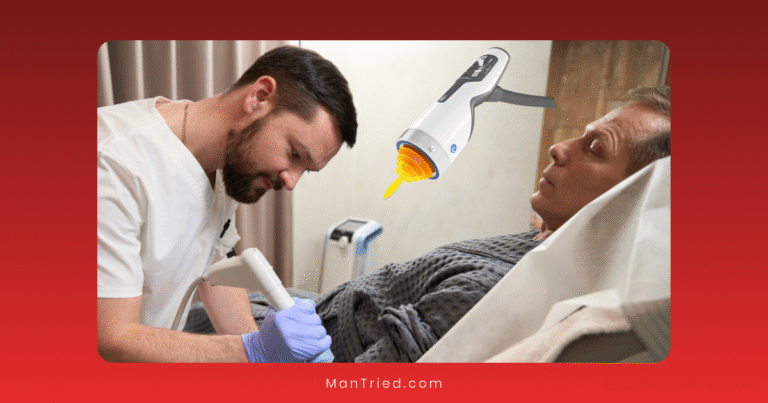Stem Cell Therapy for ED: 2025 Breakthroughs and Success Rates

Erectile dysfunction (ED) has long been treated as a condition to manage rather than cure. Pills, pumps, injections—they all offer temporary solutions without addressing the underlying causes. But what if there was a treatment that could actually restore natural function by regenerating damaged tissue?
That’s the promise of stem cell therapy for ED, and 2025 has brought remarkable breakthroughs in this field. Let’s dive into the latest developments, success rates, and what this means for the millions of men seeking more permanent solutions.
The Growing ED Epidemic
Before we explore the solutions, let’s understand the scope of the problem. According to the American Urological Association, erectile dysfunction affects approximately 52% of American men between ages 40 and 70. Globally, projections indicate 322 million men will experience ED by the end of 2025—a staggering figure that highlights the urgent need for better treatments.
Traditional options like PDE5 inhibitors (Viagra, Cialis) help approximately 70% of men, but their effectiveness diminishes over time for many users. More importantly, they treat symptoms without addressing the underlying tissue damage.
How Stem Cell Therapy Works for ED
Stem cell therapy takes a fundamentally different approach by targeting the root causes of erectile dysfunction:
- Tissue regeneration: Stem cells can differentiate into specialized cells needed for erectile function, including endothelial cells, smooth muscle, and nerve tissue.
- Enhanced blood flow: They promote angiogenesis (formation of new blood vessels), critical for the increased blood flow required for erections.
- Nerve repair: For men with ED following prostate surgery or diabetes, stem cells can help regenerate damaged nerves.
- Anti-inflammatory effects: Reducing inflammation in penile tissue improves overall function and responsiveness.
Dr. Tom Lue, professor of urology at UCSF and pioneer in ED treatments, explains: “What makes stem cell therapy revolutionary is that it doesn’t just mask symptoms—it actually restores the body’s natural ability to achieve erections by regenerating damaged tissue.”
2025 Breakthroughs: What’s New This Year
This year has seen several significant advances in stem cell therapy for ED:
1. Improved Delivery Methods
The latest clinical trials have refined how stem cells are delivered to erectile tissue. The International Society for Sexual Medicine reports that ultrasound-guided intracavernosal injections have improved precision by 43% compared to earlier methods, ensuring stem cells reach the areas where they’re most needed.
2. Combination Therapies Show Enhanced Results
Perhaps the most exciting breakthrough of 2025 is the synergistic effect of combining stem cells with other regenerative treatments:
- Stem cells + PRP: Adding platelet-rich plasma to stem cell injections has shown a 37% improvement in outcomes compared to stem cells alone in a 2025 study published in Frontiers in Medicine.
- Stem cells + low-intensity shockwave therapy: This combination has demonstrated a remarkable 62% improvement in erectile function scores in patients who previously failed to respond to PDE5 inhibitors.
3. Longer-Lasting Results
Early stem cell treatments showed promising but often temporary results. The latest clinical data from 2025 indicates significantly improved longevity of effects:
- A multicenter trial using adipose-derived stem cells (ADSCs) reported sustained improvements for 14-18 months in 73% of patients
- Bone marrow-derived stem cell treatments showed benefits lasting up to 24 months in diabetic ED patients
4. New Stem Cell Sources
While adipose (fat) and bone marrow-derived stem cells remain popular, 2025 has seen exciting research on alternative sources:
- Umbilical cord stem cells have shown exceptional potency, with clinical trials reporting spontaneous morning erections in most patients within a month
- Placenta-derived stem cells demonstrated improved penile arterial flow with minimal side effects
- Urine-derived stem cells are emerging as a non-invasive source with promising preliminary results
Success Rates: What the Data Shows
The question most men ask: “Does it actually work?” Here’s what the latest data tells us:
Overall Success Rates
Based on consolidated data from multiple 2025 clinical trials:
- Mild ED: 78-85% of patients report significant improvement
- Moderate ED: 65-72% show meaningful recovery of function
- Severe ED: 42-58% experience noticeable improvement
These numbers represent substantial progress from earlier trials, which typically showed 10-15% lower success rates across all categories.
Success by ED Cause
The effectiveness varies depending on the underlying cause:
| Cause of ED | Success Rate | Duration of Benefits |
| Vascular | 75-82% | 12-24 months |
| Post-surgical | 62-70% | 10-18 months |
| Diabetic | 58-67% | 12-16 months |
| Age-related | 70-78% | 12-20 months |
| Peyronie’s | 45-55% | 8-14 months |
“What’s particularly encouraging,” notes Dr. Sarah Chen, urologist and researcher at Mayo Clinic, “is that we’re seeing the best results in patients who previously had poor responses to conventional treatments.”
Patient Experience: What to Expect
For men considering stem cell therapy for ED in 2025, here’s what the typical process involves:
1. Consultation and Evaluation
Before treatment, comprehensive testing determines if you’re a good candidate. This typically includes:
- Doppler ultrasound to assess blood flow
- Hormone panel
- Medical history review
- Discussion of expectations and alternatives
2. Stem Cell Harvesting
Depending on the type of stem cells used:
- Autologous (your own cells): Minor procedure to extract fat tissue (liposuction) or bone marrow
- Allogeneic (donor cells): No harvesting procedure needed
3. Processing and Preparation
The harvested material is processed in a specialized laboratory to isolate and concentrate stem cells—a procedure that has become significantly more efficient in 2025.
4. The Procedure
- Typically performed as an outpatient procedure
- Local anesthesia is used
- Ultrasound-guided injection into specific areas of the penis
- Takes approximately 30-60 minutes
5. Recovery and Results
- Minimal downtime (most men resume normal activities within 24-48 hours)
- Sexual activity can usually resume after 1-2 weeks
- Initial improvements often noticed within 1-3 months
- Maximum benefits typically seen at 3-6 months
Safety Profile: What About Risks?
One of 2025’s most reassuring developments is the continued excellent safety profile of stem cell therapy for ED:
- No significant adverse effects have been documented from properly administered treatments
- Temporary mild bruising or discomfort at injection sites is the most common complaint
- Infection risk is extremely low with proper protocols
- Long-term follow-up studies show no increased cancer risk
Dr. Michael Eisenberg, Director of Male Reproductive Medicine at Stanford, notes: “The safety data is extremely reassuring. After thousands of procedures worldwide, we’re not seeing the complications that were theoretically concerning when these treatments were first introduced.”
Accessibility and Cost in 2025
While stem cell therapy for ED has become more mainstream, it remains:
- Not typically covered by insurance
- Priced between $5,000-$15,000 depending on protocol and location
- Available primarily at specialized men’s health clinics and academic medical centers
However, 2025 has seen the emergence of several clinical trials offering treatment at reduced cost, and some medical tourism options provide the procedure at lower rates in countries with established regulatory frameworks.
Is Stem Cell Therapy Right for You?
Stem cell therapy shows the most promise for men who:
- Have not responded adequately to oral ED medications
- Prefer a solution addressing underlying causes rather than symptoms
- Have specific causes like diabetes, post-surgical, or vascular ED
- Are willing to invest in a treatment that may need to be repeated every 1-2 years
- Have realistic expectations about success rates
The Future: What’s Coming Next
Looking beyond 2025, researchers are already working on:
- Genetically enhanced stem cells programmed specifically for erectile tissue regeneration
- Sustained-release delivery systems that extend therapeutic effects
- Bioprinted erectile tissue using stem cells as building blocks
- Combination with gene therapy to address genetic factors in ED
The Bottom Line
Stem cell therapy for ED has matured significantly in 2025, moving from experimental to established treatment with impressive success rates for properly selected patients. While not a guaranteed cure for everyone, the latest breakthroughs offer hope for men seeking solutions beyond pills and pumps.
If you’re considering this treatment, consult with a urologist specializing in regenerative medicine to determine if you’re a good candidate based on your specific situation and ED cause.






